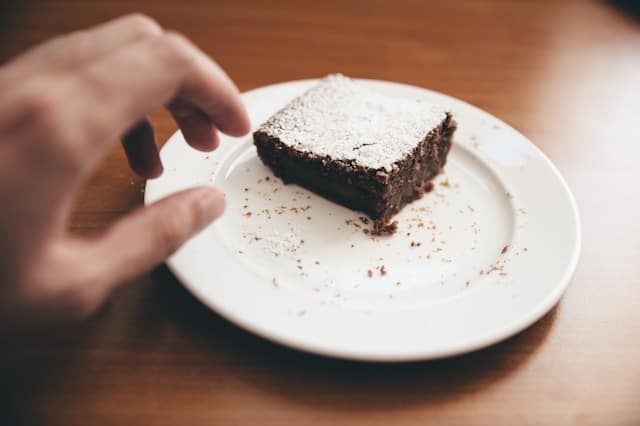What’s the Key to a Perfectly Baked French Quiche Lorraine with a Flaky Crust?

If you’re a fan of savory pies, you’ve surely come across the French Quiche Lorraine. A delicious, creamy filling of egg, cream, cheese, and bacon, all nestled in a buttery, flaky crust. It’s a classic dish that has won hearts worldwide, but what exactly is the key to baking this dish to perfection at home? This article will delve into the details, from the ideal pastry recipe to the precise baking time, ensuring that you achieve the ultimate Quiche Lorraine.
Perfecting the Pastry Crust
A Quiche Lorraine starts with a great pastry crust. But how do you achieve that desired flakiness, that melt-in-your-mouth texture that forms the base of a perfect quiche? Here we will explore the recipe and the technique to perfect the crust before you start filling it in.
En parallèle : What’s the Secret to a Tender and Juicy Brisket with a Texas-Style Rub?
The perfect pastry for this recipe is a basic shortcrust. To make the dough, you will need 200g of plain flour, a pinch of salt, 100g of cold, cubed butter, and approximately 2-3 tablespoons of cold water. Combine the flour and salt, then add the butter. Use your fingers to rub the butter into the flour until the mixture resembles breadcrumbs.
Next, sprinkle the water over the mixture. Use a knife to stir until the dough forms a ball. Turn the dough out onto a lightly floured surface, and knead it briefly to bring it together. Refrigerate for at least 30 minutes before rolling out.
Dans le meme genre : How to Make a Flawless Salted Caramel Chocolate Tart with a Shortbread Crust?
When it’s time to roll out the dough, ensure that your surface and rolling pin are lightly floured. Roll out the dough to fit your pie dish, then carefully lift it into the dish. Press it into the corners and trim any excess. Prick the base with a fork, line with baking paper and baking beans, and blind bake for 15 minutes in a preheated oven at 200°C.
Creating the Quiche Filling
With a perfectly baked crust ready, it’s time to focus on the quiche filling. The classic Lorraine filling consists of bacon, cheese, egg, and cream. Let’s look at how to combine these ingredients in the right proportions to create a filling that is creamy yet firm, and packed with flavor.
You will need 200g of streaky bacon, 50g of cheese (Gruyère is the traditional choice, but Cheddar works too), 150ml of cream, and three eggs. Start by frying the bacon until it’s crispy, then set it aside to cool. Beat the eggs in a bowl, then whisk in the cream. Season with salt and pepper, then stir in the cheese and cooled bacon.
Pour this mixture into your pre-baked pie crust, then bake in the oven at 180°C for 25-30 minutes, or until the filling is set and golden.
Understanding the Baking Process
Knowing how and why things bake the way they do can make a massive difference in the final outcome. Understanding the baking process of a Quiche Lorraine will ensure that you achieve the right texture and doneness every single time.
Baking is a science that hinges on the right combination of heat and time. In the case of Quiche Lorraine, the pie should be baked at a temperature that allows the egg proteins to set without overcooking, resulting in a creamy, custard-like filling.
The blind baking process, where the pie crust is partially baked before adding the filling, ensures that the crust is fully cooked through and is flaky and crispy. This step is crucial because once the liquid filling is added, it slows down the baking process of the crust.
After the filling is added, the quiche needs to be baked just until the filling is set. This typically happens at around 71°C. Overbaking the quiche will result in a watery filling, as the high heat can cause the eggs to release their moisture.
Tips and Tricks for the Perfect Quiche Lorraine
Baking a Quiche Lorraine isn’t particularly hard, but it does require a few tips and tricks to get it just right. Here are a few pointers to keep in mind.
First, always preheat your oven. A properly heated oven ensures that your pie starts cooking as soon as it goes in, and it cooks evenly.
When making the crust, don’t overwork the dough. Overworking develops the gluten in the flour, leading to a tough crust instead of a flaky one. Also, chill your dough before rolling it out. This relaxes the gluten and makes the dough easier to work with.
For the filling, don’t skimp on the cream. The cream provides the rich, creamy texture that defines a Quiche Lorraine. Also, make sure your cheese is finely grated, so it melts easily into the egg and cream mixture.
Lastly, don’t rush the baking process. It’s tempting to increase the heat to get the quiche cooked faster, but a lower temperature is key to achieving a creamy, custard-like filling.
Experimenting with Quiche Lorraine Variations
Once you’ve mastered the classic Quiche Lorraine, you can start playing around with variations. While the traditional recipe calls for bacon and cheese, there’s plenty of room for creativity.
For instance, you can add vegetables to your quiche for an extra serving of greens. Spinach, bell peppers, mushrooms, and onions are all excellent choices. Just make sure to sauté your vegetables first to remove excess moisture, which can make your quiche soggy.
You can also experiment with different types of cheese. While Gruyère and cheddar are traditional, try substituting them with blue cheese, feta, or goat cheese for a twist.
Remember, the key to a perfectly baked French Quiche Lorraine with a flaky crust is attention to detail, from the pastry recipe and baking time to the filling and baking process. With these tips and tricks, you’re well on your way to mastering this classic dish.
Pie Weights and Blind Baking
Using pie weights during the blind baking process is an essential step to ensure a perfectly baked pie crust. It prevents the dough from puffing up or shrinking while baking, ensuring the crust holds its shape and is perfectly cooked, ready for the filling.
When making your quiche crust, after you’ve placed it in the pie dish, remember to prick the base with a fork. This process, known as docking, allows steam to escape during the blind bake and prevents the crust from puffing up.
After docking, line the crust with parchment paper or aluminium foil, ensuring it covers the entire surface of the crust. Then, fill the lined crust with pie weights. You can use commercial pie weights, or uncooked rice or dried beans as a more economical option. They hold down the crust, allowing it to cook evenly without puffing up or shrinking.
Once filled with the pie weights, place the crust on a baking sheet to catch any butter that may drip during baking. Put the crust into the preheated oven and blind bake for 15 minutes. After that, carefully remove the weights, and return the crust to the oven for another 5-10 minutes, or until it’s golden. This guarantees a fully baked, crispy crust, ready for the quiche filling.
The Role of Heavy Cream in the Quiche Recipe
One of the signature characteristics of a quiche Lorraine is its creamy, custard-like filling. This texture is primarily achieved by the use of heavy cream in the quiche recipe.
Eggs alone, while they set up nicely when baked, don’t provide the same creamy, rich texture that you get when heavy cream is added. The cream blends seamlessly with the eggs, giving the quiche its classic, smooth texture that contrasts perfectly with the crispy crust.
It’s important to note that the type of cream does matter. Heavy cream, also known as whipping cream, has a high-fat content of about 36-40%. This high-fat content is what gives the quiche its rich, creamy texture.
When preparing your filling, whisk the heavy cream into the beaten eggs until thoroughly combined. The mixture should be smooth and slightly frothy. Also, don’t forget to season your filling. A touch of salt and pepper enhances the flavors of the cheese and bacon, making a flavorful, creamy filling that’s the hallmark of a great Quiche Lorraine.
Conclusion
Mastering the perfect French Quiche Lorraine with a flaky crust may seem a bit daunting, but with attention to detail and a few professional tips, you can achieve this classic dish in your own kitchen. Remember, the key elements to focus on are the shortcrust pastry, blind baking with pie weights, and the right balance of eggs and heavy cream for a custard-like filling.
Don’t be afraid to experiment with the quiche recipe. Try different cheeses other than the traditional Gruyère or Cheddar. Perhaps add some sautéed vegetables for extra flavor and color, or substitute the bacon with ham or even salmon for a different take on this beloved dish.
Quiche Lorraine, with its rich and creamy filling, crispy crust, and endless variations, is a versatile dish perfect for any meal, and now, you have all the tools you need to bake a memorable one. Bon appétit!
